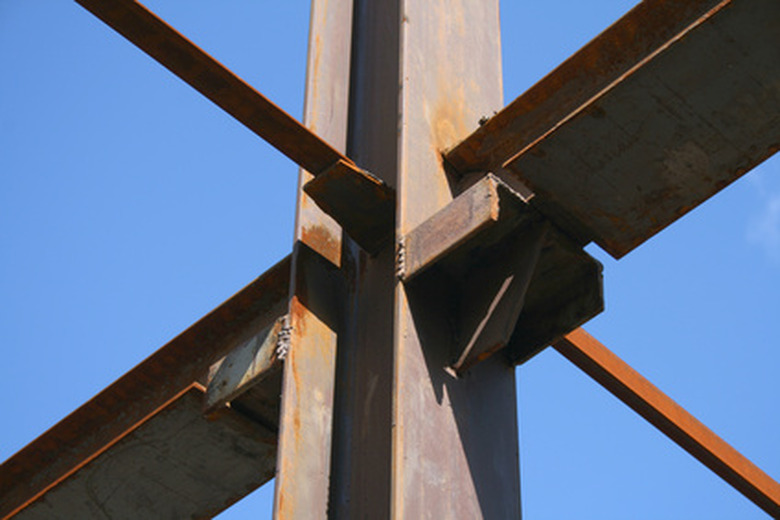How To Calculate Allowable Stress In Steel
Stress is the amount of force per area on an object. The maximum stress that an object is expected to support is called the allowable stress. For example, the floors in a library might have an allowable stress of 150 pounds per square foot.
The allowable stress is determined by both the factor of safety imposed on the object and the yield strength, or stress at which an object will be permanently damaged.
Step 1
Examine a list of general properties of steels to verify the yield strength of the steel being used. There are many different types of steel alloys, and they all have different properties and yield strengths. A popular steel alloy is call A36, the 36 indicating a yield strength of 36,000 pounds per square inch.
Step 2
Select a factor of safety based on the industry standards for the particular project. In the aerospace industry, the factor is 1.5 whereas the cables in elevators must have a factor of 11. If there is no standard set, a good factor of safety is 4.
Step 3
Divide the yield strength by the factor of safety to calculate the allowable stress. For example: allowable stress of A36 steel = 36,000 psi / 4.0 = 9,000 pounds per square inch.
References
- "Strength and Stiffness of Engineering Systems"; Frederick Leckie and Dominic Bello; 2009
Cite This Article
MLA
Holladay, Greg. "How To Calculate Allowable Stress In Steel" sciencing.com, https://www.sciencing.com/calculate-allowable-stress-steel-6785452/. 24 April 2017.
APA
Holladay, Greg. (2017, April 24). How To Calculate Allowable Stress In Steel. sciencing.com. Retrieved from https://www.sciencing.com/calculate-allowable-stress-steel-6785452/
Chicago
Holladay, Greg. How To Calculate Allowable Stress In Steel last modified March 24, 2022. https://www.sciencing.com/calculate-allowable-stress-steel-6785452/
